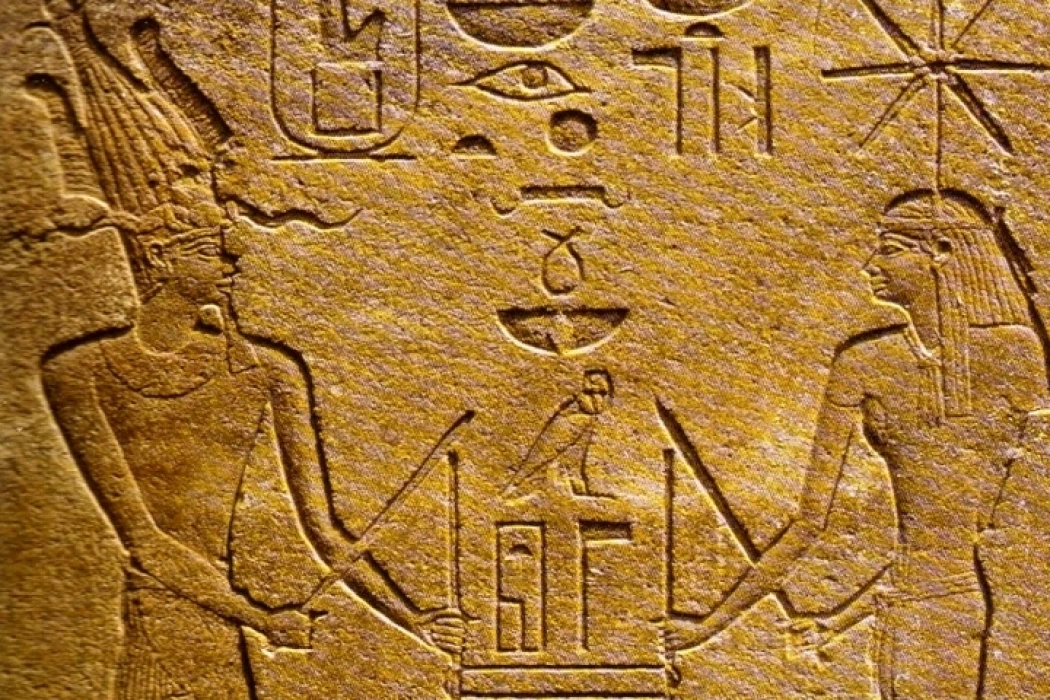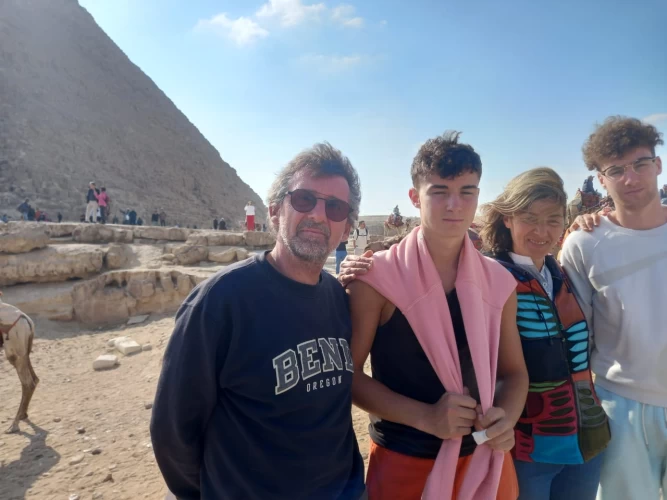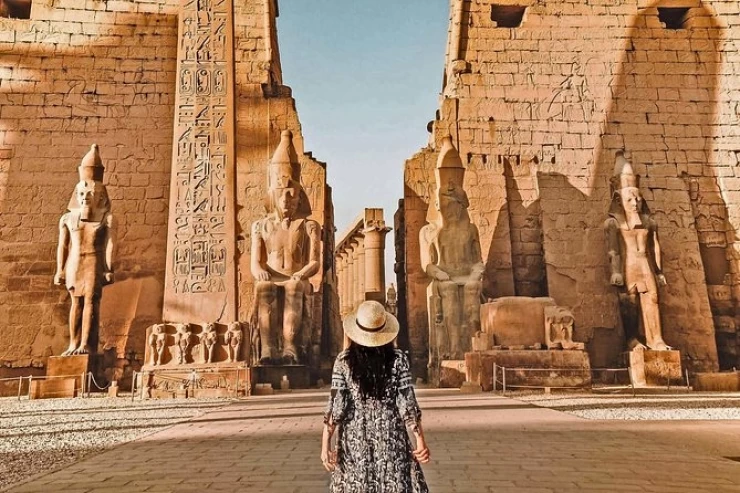
Deusa Seshat | Deusa da Escrita
Deusa Seshat
Seshat, na antiga fé egípcia, era o imortal da escrita e da actividade e, portanto, o governante dos livros.
Ela era a consorte do deus Djhuty (Thoth), e cada um era um escriba divino (Sesb).
Era retratada como uma mulher carregando um lenço com chifres e uma estrela juntamente com o seu nome escrito sobre o mesmo.
Deusa da Escrita
As representações dela mostram geralmente que o seu vestido era uma bainha compreensível forrada por uma pele de pantera estendida, com a cauda a atingir os pés. Ela estava tipicamente delineando com a costela de palma dentada que pintava a passagem do seu tempo.
Acreditava-se que Seshat era um grau de associado competente na arte de observar as celebridades e planetas. Ela foi registada como tendo ajudado o balancim dentro do ritual de "esticar o cordão" relacionado com as medidas astronómicas e pseudocientíficas para a situação dos templos. Seshat era o guardião das plantas baixas e dos mapas dentro do ritual. Seshat foi conjuntamente retratado a registar os jubileus do faraó, como dentro do desfile de Sed, as cinzas contam, e por isso as campanhas do faraó tão cedo por causa da família ordinal. Relevos encontrados em templos do Velho Reino (c. 2575-c. 2130 a.C.) e do Reino do Meio (c. 1938-c. 1630 a.C.) retratam-na porque o registo de quantidades de cativos estrangeiros e pilhagem no rescaldo das campanhas militares.
Seshat era conhecida pelo epíteto "Mistress of the House of Books" porque ela cuidava da biblioteca dos deuses e era a padroeira de todas as bibliotecas terrestres. Era também padroeira de todas as formas de escrita, incluindo contabilidade, auditoria, e da realização do censo. Segundo um mito, foi realmente Seshat que inventou a escrita, mas foi o seu marido Thoth que ensinou o povo a escrever.
É interessante notar que ela é a única personagem feminina que foi realmente retratada no acto de escrever. Várias outras mulheres foram retratadas segurando a paleta e o pincel do escriba, indicando que sabiam escrever, mas não estavam realmente empenhadas na escrita.
Descubra mais sobre os deuses e deusas do antigo Egipto através de excursões de um dia em Luxor também se puder embarcar no comboio por algumas horas a norte também o pode cobrir durante as excursões de um dia emswan ou mesmo a nossa excursão de 2 dias a Luxor a partir deswan, há muitas excursões de um dia a Luxor a partir de várias cidades egípcias como Hurgada excursões de um dia por terra a Luxor, ou se vier de férias de lazer em Sharm pode apanhar o avião por um dia durante as excursões de Sharm El Sheikh para explorar toda a cidade histórica.
Reserve agora para uma grande experiência de férias no Egipto e pacotes de férias no Egipto Excursões de um dia a Luxor, excursões de um dia aswan, e excursões de um dia a Luxor no Egipto para apreciar as fabulosas pirâmides de Gizé & a Esfinge, a excursão ao Museu Egípcio, Vale dos Reis, Cairo Copta e Islâmico, bem como ao Templo de Abu Simbel, a melhor maneira de explorar o país são as excursões de um dia ao Egipto, excursões de um dia ao Cairo e excursões de um dia ao Cairo a partir do aeroporto para ver todas as maravilhas inacreditáveis do antigo Egipto e aprender mais sobre a história egípcia.
She was pictured as a cow, lying on a reed mat, as a girl with the top of a cow, or as an attractive lady. typically, she was portrayed sporting the sun disk article of clothing between her horns. She generally is shown sporting a Manet. (The Menat, a piece of jewelry with a special counterweight, isn't truly jewelry - it's an instrument sacred to Hathor.)
Representations of her generally show her dress to be an understandable sheath lined by an extended panther skin, with the tail reaching her feet. She was typically delineating with the notched palm rib that painted the passing of time.
Seshat was believed to be an associate skilled in the art of observing celebrities and planets. She was recorded as having assisted the swayer within the ritual of “stretching the cord” related to astronomical and pseudoscience measurements for the situation of temples. Seshat was the keeper of ground plans and charts within the ritual.
Seshat was conjointly pictured recording the pharaoh’s jubilees, like within the Sed pageant, kine counts, and therefore the pharaoh’s campaigns as early because of the ordinal family. Reliefs found in temples of the Old Kingdom (c. 2575–c. 2130 BCE) and Middle Kingdom (c. 1938–c. 1630 BCE) depict her because the recorded of quantities of foreign captives and plunder in the aftermath of military campaigns.
Seshat was known by the epithet “Mistress of the House of Books” because she looked after the library of the gods and was the patron of all earthly libraries. She was also a patron of all forms of writing, including accounting, auditing, and the taking of the census. According to one myth, it was actually Seshat who invented writing, but it was her husband Thoth who taught the people to write.
It is interesting to note that she is the only female character who was actually depicted in the act of writing. A number of other women were depicted holding the scribe’s palette and brush, indicating that they could write, but were not actually engaged in writing.
How was Seshat depicted in reliefs?
In reliefs, she was portrayed as a woman with a seven-armed symbol raised above her head. In 1479–1425 BC, she was referred to as Sefket Aboi, which translates to "seven-pointed." According to the tenth Coffin Text, "Seshat opens the gates of heaven for you."
How was she depicted in reliefs?
Typically, she was shown with a stylus in hand, making cuts on a palm branch to indicate the passing of time, particularly to document and chart a pharaoh's life. She was also depicted with other tools, usually with knotted ropes stretched out to mark the area of land and buildings.
The Cult of Seshat
The cult of Seshat is unique in that, rather than having temples dedicated to her alone, she was the host of the greatest sanctuaries. Sanctuaries in whose construction she participated by definition, since when Seshat wasn't writing and recording the history of the country, she was building. Thus, it was in the environment of the King or Pharaoh that the Goddess was most sought after, if not truly celebrated. In fact, according to Egyptian beliefs, especially those of the king, Seshat actually interfered with a number of royal acts, such as foundations and jubilees. There were few temples and few festivals dedicated to this deity. This discretion of the Goddess is confirmed by the rarity of places of worship dedicated to her. It seems that she did have a clergy, however, who originated from the Delta and more specifically from Sais. Memphis and Hermopolis, the city of the god Thoth, where Seshat was frequently worshipped, also bear witness to his veneration.
















